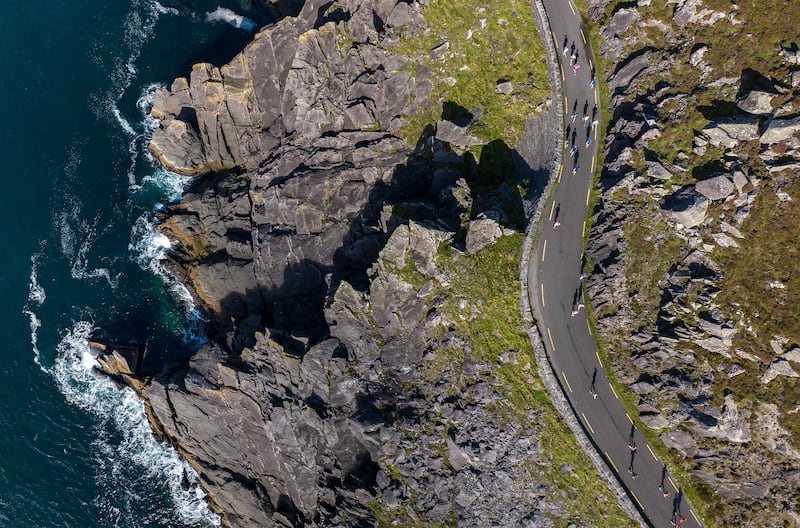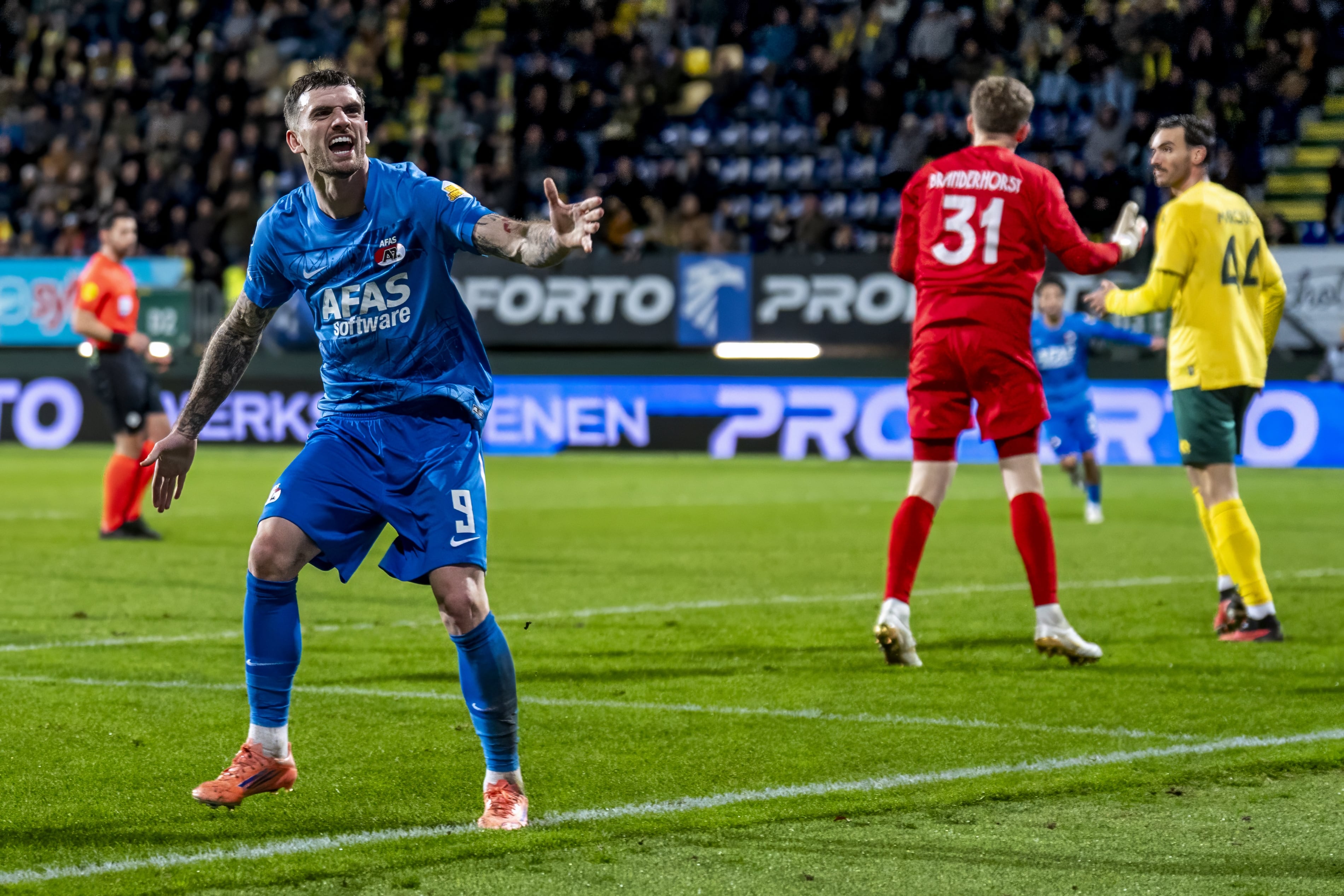All marathon journeys are about reaching your destination: the finish! In the seventh of our monthly series, The Irish Times continues its running lessons to help make that journey a little easier and a lot more fun — all the way to the finish of the 2023 Irish Life Dublin Marathon on October 29th.
Maybe it’s running in the soft dewy dawn, across well-worn grass, the still broad sun cutting long shadows out of branches. Or running into the dusky light, when the day is losing, the air gently scented of rusting leaves and bark.
You know the Dublin marathon is getting close when it feels like this. You can start to sense it on the ground and in the warm autumn sky.
Because something and everything about this week of September takes me back to my first attempt at the Dublin marathon. It was 2001, I was 29 years old, and the plan to run it was first hatched somewhere down by the Rio Guadalquivir in Seville, a few months before.
READ MORE
We were visiting my younger brother, still young and carefree, maybe a little too much so. At some point, the conversation turned to the marathon, which to me wasn’t one less thing to do in life, maybe just something to run before hitting 30.
There was no specific training plan, only to steadily build up the distance and then the pace. Things essentially stuck to that plan in June and July, with plenty of slow and steady runs mostly around Belfield, just across the road from where my parents had recently moved. Getting the love and the lure back, with each passing week, the classic distance became less daunting too, even though I’d never raced more than 10km.
Then came the month of August. Duly dispatched to Edmonton for the World Athletics Championships, a two-week trip at the end of an unseasonably hot Canadian summer, one missed day of running turned into another. And then another.
It didn’t help that we were staying in a creaky motel just off a hilly two-lane highway, somewhere on the outskirts of town, and there wasn’t anywhere practical or easy to go running. So that trip was a wipe-out (except for the Media 800m Race, which just proved how quickly all fitness can disappear).

On returning home, the plan to break gently back into the marathon training soon went as easily astray. One little interruption or digression after the other; a stag weekend, a late-night summer bash, U2 playing Slane Castle.
So, by the time September rolled around, even though blessed then by perfect weather, the idea of running anything even approaching 26.2 miles wasn’t so appealing, especially when set against that sense all the training in June and July had long since gone down the drain. And wasn’t there always next year?
Then on a particularly bright Tuesday morning, I arrived into the old Irish Times building on D’Olier Street, still armed with a few follow-ups from the All-Ireland hurling final two days before (Nicky English securing his place in Tipperary hurling folklore by guiding them to a first title in exactly a decade).
On the third floor, the Sports Department TV screens were already all tuned into Sky News, and the news of one and then two passenger jet airplanes crashing into the Twin Towers of the World Trade Center. Nothing to do on this day, only go home and try to make some sense of all.
Around five that afternoon, I decided to go for a run, across to Belfield and back over some other old haunts, not thinking about time or distance, until realising I’d gone a long way into both. On returning home, around three hours later, still trying to make sense of what happened in New York on that otherwise bright, September morning, all plans to run the Dublin marathon were back on.

The lesson here may appear obvious but it’s an important one: no marathon training plans will go exactly as hoped or expected, some drifting further astray than others, which is okay once you stick with it.
The next four weeks running of that September, intent and enthusiasm soaring again, proved the most productive, as indeed these next four weeks can be. Soon realising the training of June and July wasn’t gone all down the drain, the break in between, enforced or otherwise, hadn’t done too much lasting harm at all. So make September count, and even if there are a couple more days when the plan feels like it’s going astray, stick with it.
Do
Think about your perfect running style.
Running with the legs, and not on them. Minimal knee lift, arms swinging just below waist level, softly tensioned as if carrying a bamboo stick in either hand.
Do think of that small bowl of water on your head, hips lurched gently forward, think of a steady rhythm and stride as if stepping over a barrel, stepping over a barrel.
And don’t forget it starts with the sound of the shuffle, because nothing will ruin the prospect of finishing a marathon more effectively than starting out too fast.
I’ve written about this before to varying degrees of bemusement and in truth, there is no such thing as the perfect or even perfectly correct running style; the aim is to get as close as the one that feels perfect for you while following these few simple guidelines.
Nowhere will this become more telling than in the later stages of the marathon, where most running styles, close to perfect or otherwise, start to break down. Don’t drift too far from what got you to the start line in the first place, and finish running with the legs, on them.
Don’t
Forget to practice drinking on the run.
Although an essential part of any marathon journey, it always surprises me how few runners have got this practice down (and drinking the last of your pint while being ushered out the door at closing time doesn’t count).
It’s easily done, practising with a cup or plastic water bottle after a run a couple of times a week should suffice; it’s not even as much about drinking as it is sipping, because you don’t want to take on too much liquid too soon, no matter what the pace.
While Dublin, like any marathon, is served by regular water stations, some runners prefer to start with their own drinks on board. Soft-vacuum bottles, designed to hold in the hand, and becoming increasingly popular; the bottle gradually gets smaller and lighter as you drink; plus, the liquid doesn’t slosh around as much as it’s in a vacuum.
Some prefer hydration backpacks or waist-packs, which can hold up to 1.5l of water, which is a lot of extra weight to be carrying from the start, even if it is all consumed early on.
Targets
At this point in any marathon training plan, taking on a half-marathon about four to six weeks before the event is universally regarded as good advice.
The Irish Life Dublin Marathon race series has been building towards this, the half marathon in the Phoenix Park on Saturday, September 23rd, already a sell-out.
Not only will the half marathon give you a fair idea of what your target marathon finish time should be but this event also takes in a part of the Dublin marathon route in the Phoenix Park, so that’s also good prep work.
However, if you’ve missed out on entry, remember it doesn’t have to be a half-marathon. There are still ample 10km running events on around the country during the month of September, so sign up for one of these — going through the same race-day practice and rituals, testing out new running shoes etc — then just add on some further distance afterwards at your own convenience.
Training in September for the 2001 Dublin marathon, I never got close to running any competitive half-marathon, except one against myself, which as any runner will tell you, is often the toughest opposition of all.

















